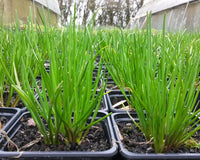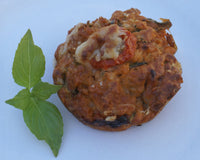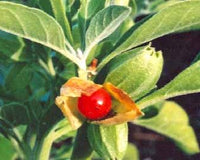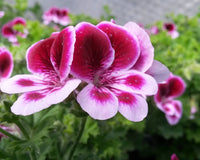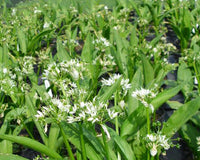There is nothing better than having a bay tree outside that you can pop out and use whenever you need it. The fact that it is relatively easy to grow, either in the ground or a container is a bonus, plus there is more than just the usual variety (Laurus nobilis) to chose from if you want something different. There is golden bay (Laurus nobilis aurea), willow leaved bay (Laurus nobilis angustifolia) and a wavy leaved one (Laurus nobilis undulata)
Bays are trees and can reach heights of about eight metres (25ft). As they are quite slow growing it is easy to keep them much smaller by pruning – or by growing them in a pot to limit their size. The best position is either in full shade or a Westerly aspect where they only get afternoon sun and this hopefully also limits their exposure to cold biting winds in the winter which tends to burn off the leaves. Don’t despair if this does happen – in the spring just cut the bay right down and it will sprout from the bottom again.

Bay trees that are grown in containers need a little bit more care. Raise the pot onto a couple of bricks in the winter to allow adequate drainage. When potting on a bay tree, only progress to a pot that is three to four centimetres larger and allow the roots to grow in to this before potting on again. It is very important to feed container grown plants including bay. This can be done by in cooperating fertiliser into the compost, or top dressing each spring with a mix of fresh compost and long-lasting fertiliser, or by giving regular liquid feed.

Bay trees are fairly pest free, but not completely, these are the most common critters;
Bay sucker – this is a small insect that sucks the sap and causes the leaves to curl over along the edges. Inside the curled margins you will find a cobweb with the insect inside. This pest doesn’t seem to harm the growth of the bay but can be unsightly. The best way to deal with it is to remove and burn infected leaves.
Scale insects – these flat insects can be found along the spine of the leaves and produce a ‘honeydew’ substance on which sooty moulds can grow. These can be treated with an organic pesticide or for small plants removed by using your nail.
Aphids (greenfly) – also produce a ‘honeydew’ type substance on which sooty moulds grow. Treat in the same way as scale.
Occasionally vine weevil adults can cause a problem by nibbling the leaves causing chewed look around the edge of the leaves. Vine weevils lay their eggs in the soil and the grubs when hatched over winter there. These can be treated with a biological control.
Bay can be used fresh from the tree, although some people say it Is more bitter than dried. I use mine fresh and find them fine – but then I haven’t got a chef’s palette, so try for yourself and see. Bay leaves are easy to dry, pick them on dry day and lay them out somewhere warm and dry but not in direct sunlight. A bedroom is ideal. Lay something light over the to keep them flat. Once dried store in an airtight container. Bay has a wide range of culinary uses from flavouring custards and sweet dishes to bouquet garnis, rice, soups, stocks and stews.

Mature bays will produce flowers – these can either be male or female flowers. The female flowers produce berries at the end of the summer.


